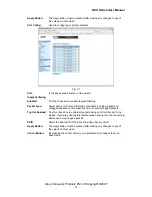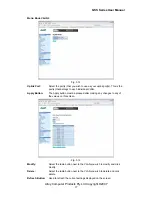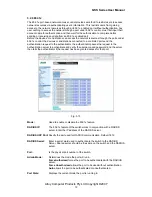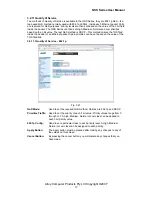
GSS Series User Manual
3.2.9 IGMP
IGMP Snooping is used to establish multicast groups to forward multicast packets to each of
the multicast member ports, and, in nature, avoids wasting bandwidth with IP multicast
packets. If a switch does not support IGMP or IGMP Snooping it can not tell a multicast
packet from a broadcast packet, so it will treat them all as broadcast packets. Without IGMP
Snooping, multicast packets are treated as broadcast packets, therefore increasing the overall
traffic on your network.
The GSS Series supports all functions of IGMP Snooping including query, report and leave.
IGMP Snooping is used by the switch to learn who belongs to a multicast group and also
update the multicast table within the switch with new multicast members. Once the switch has
learned who belongs to the multicast group all packets forwarded to a multicast address will
be forwarded to all members belonging to the multicast group.
Fig. 3.19
IGMP Enabled:
Used to enable or disable the IGMP function.
Router Ports:
Used to specify administrative router ports for IGMP frames.
Unregistered
IPMC Flooding
Enabled:
Used to set forwarding options for unregistered IP multicast traffic. When
enabled unregistered multicast packets will be forwarded to all ports, if
disabled all unregistered multicast traffic will be forwarded to the router
ports.
The next table will list all VLAN groups that have been configured in the switch. IGMP
Features can be enabled or disabled per VLAN group.
IGMP Snooping
Enabled:
Used to enable IGMP snooping on the VLAN group.
IGMP Querying
Enabled:
Used to enable IGMP querying on the VLAN group.
Refresh Button:
Used to refresh the current settings displayed on the screen.
Apply Button:
The Apply button must be pressed after making any changes to any of
the values on this screen.
Alloy Computer Products Pty Ltd Copyright ©2007
35
















































